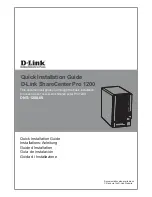
devices run the same IOS. Some use a graphical interface, some use a Set/Clear command−line interface, and
some use a Cisco Command Line Interface (CLI). Cisco has acquired more devices than they have designed
and built themselves. Therefore, Cisco has adapted the operating systems designed for each device they have
acquired to use the protocols and standards of the company. Almost all Cisco routers run the same IOS, but
only about half of the switches currently run the Cisco CLI IOS.
Knowing what configuration mode you are in and how to enter each configuration mode on the Cisco CLI is
important. Recognizing what each mode configures will aid you in using the proper configuration mode. The
Set/Clear command−based IOS is similar in modes, but uses the enable, set, show, and clear commands
(covered in the next chapter).
Connecting to the Switch
You can connect to a Cisco switch to configure the switch, verify the configuration, or check statistics.
Although there are different ways of connecting to a Cisco switch, typically you would connect to its console
port.
In lower−end Cisco switches, the console port is usually an RJ−45 connection on the back of the switch. On a
higher−end switch, you may find console ports on the line cards such as a Supervisor Engine. By default there
is no password set on the console port.
Another way to connect to a Cisco switch or router is through an auxiliary port. This is basically the same as
connecting through a console port, but it allows you to connect remotely by using a modem. This means you
can dial up a remote switch and perform configuration changes, verify the configuration, or check statistics.
A third way to connect to a Cisco switch is through the program Telnet. Telnet is a program that emulates a
dumb terminal. You can use Telnet to connect to any active port on the switch, such as an Ethernet or serial
port.
Cisco also allows you to configure the switch by using Switch Manager, which is a way of configuring your
switch through a Web browser using HTTP. This method creates a graphical interface for configuring your
switch. The Switch Manager allows you to perform most of the same configurations as you can with the CLI.
Powering Up the Switch
When you first power up a Cisco switch, it runs the power on self test (POST), which runs diagnostics on the
internal workings of the switch. If the switch passes this test, it will look for and load the Cisco IOS from
Flash memory if a file is present. Flash memory is read−only memory kept on an EEPROM (a silicon chip
inside of the switch). The IOS then loads the configuration contained in nonvolatile RAM (NVRAM).
NVRAM is similar to random access memory (RAM) but is not lost when the power is cycled on the switch.
This loads the configuration of the Cisco IOS and the Cisco user interface becomes available.
The Cisco IOS user interface is divided into several different modes. The commands available to you in each
mode determine the mode you are in. When you start a session on the switch, you begin in User EXEC mode,
often called EXEC mode. Only a limited subset of the commands is available in EXEC mode. In order to have
access to all commands, you must enter Privileged EXEC mode. From Privileged EXEC mode, you can enter
any EXEC command or enter Global Configuration mode, which offers even more command options. From
global configuration mode you can also enter into any interface configuration mode to configure an interface
(port) or a subinterface.
Subinterfaces
Subinterfaces allow you to create virtual interfaces within an interface or port on a switch. When entering an
interface number with a decimal subinterface number, the prompt changes to (config−subif)#. Let’s look at an
example:
25
















































